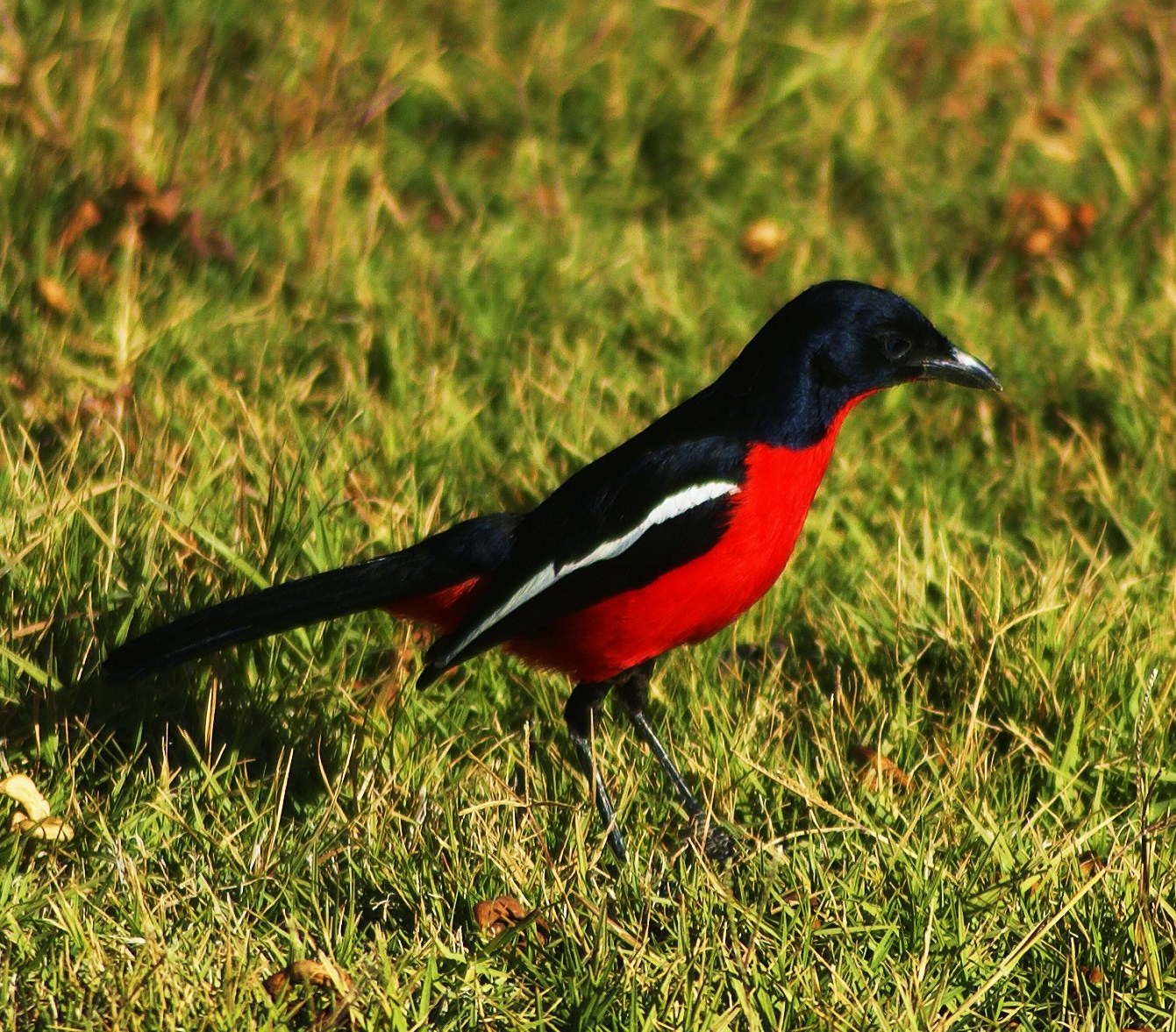Laniarius atrococcineus
 |
| Photo by Hans Hillewaert (Wikipedia) |
Common name:
crimson-breasted gonolek (en); picanço-preto-e-vermelho (pt); gonolek rouge et noir (fr); gonolek de Burchell (es); rotbauchwürger (de)
Taxonomy:
Order Passeriformes
Family Malaconotidae
Range:
This African species occurs in a band from Angola and Zambia to the northern parts of South Africa, with large populations in Namibia, Botswana and western Zimbabwe.
Size:
These birds are 23 cm long and weigh 40-45 g.
Habitat:
The crimson-breasted gonolek generally prefers arid habitats, especially thornveld, Acacia savanna, semi-arid scrubland and riparian scrub, being largely absent from deserts.
Diet:
These birds mostly glean prey from the leaves and trunks of trees, often also flying to the ground to feed. Their diet is largely composed of ants, beetles and caterpillars, but they also eat fruits.
Breeding:
Crimson-breasted gonoleks breed in August-January, with a peak in October-November. Both sexes construct the nest, a tidy cup made almost entirely of Acacia tree bark lined with grass and rootlets. It is usually bound with spider web to a fork in the main stem of a plant, or occasionally onto a horizontal branch. There the female lays 2-3 eggs, which are incubated by both sexes for 15-17 days. The chicks are fed and brooded by both parents and fledge 18-20 days after hatching.
Conservation:
IUCN status – LC (Least Concern)
This species has a very large breeding range and is described as common to locally fairly common. The population is suspected to be increasing as ongoing habitat degradation is creating new areas of suitable habitat.







